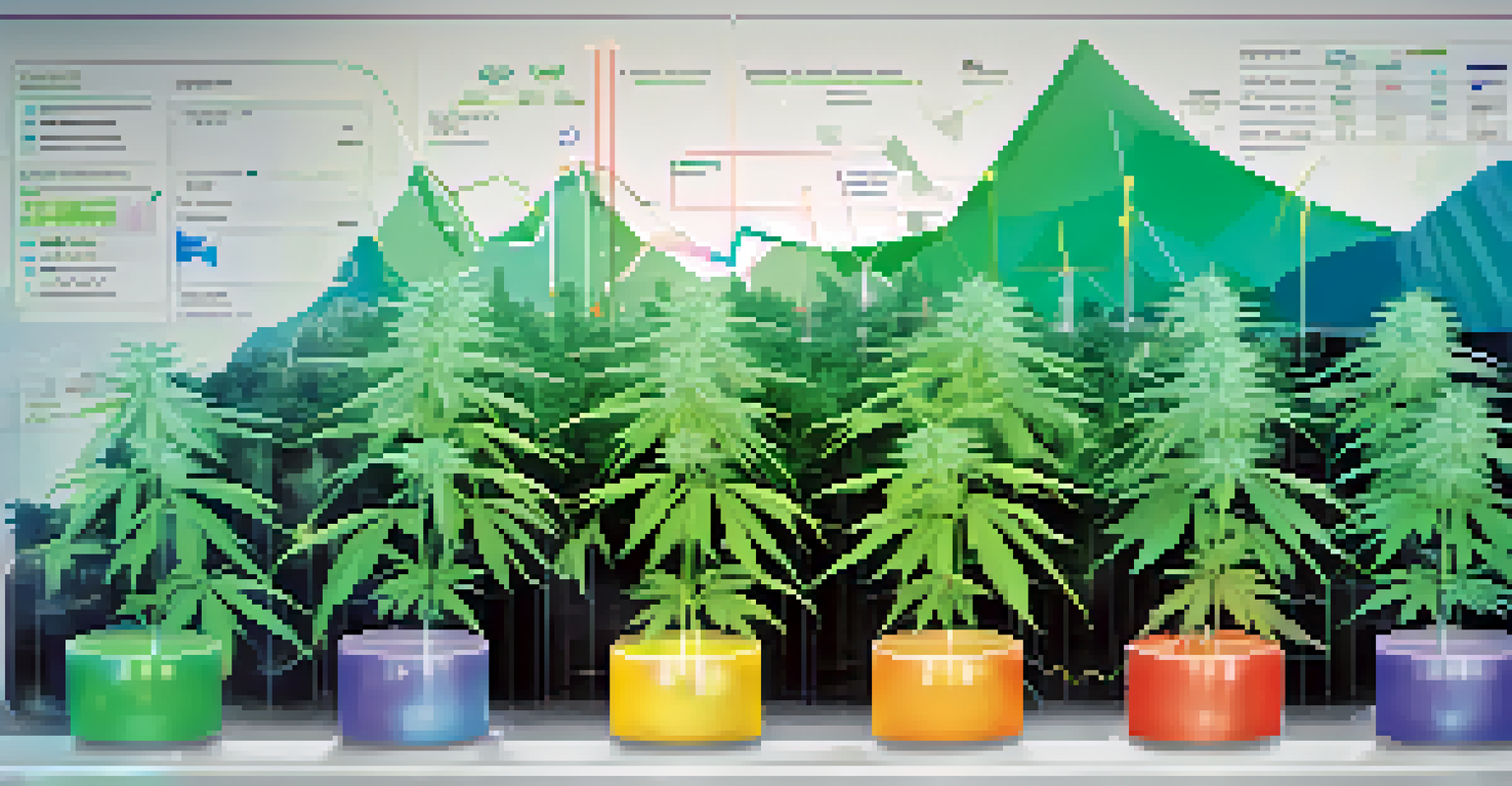Digital Innovations in Monitoring Marijuana Consumption Trends

Understanding the Importance of Monitoring Consumption Trends
Monitoring marijuana consumption trends is crucial in today's evolving landscape of legalization and social acceptance. As more states and countries legalize cannabis, understanding these trends helps businesses, policymakers, and health professionals make informed decisions. It also allows for the identification of patterns that can influence marketing strategies and public health initiatives.
Data is the new oil, and understanding consumption patterns can unlock tremendous value in the cannabis industry.
Moreover, tracking consumption trends can reveal shifts in consumer behavior, such as preferences for specific strains or consumption methods. This insight can guide product development, ensuring that offerings align with what consumers are seeking. In a rapidly changing market, being attuned to these trends is essential for staying competitive.
Finally, monitoring consumption trends can foster responsible usage, helping to educate consumers about safe practices. By understanding how, when, and why people consume marijuana, stakeholders can develop effective outreach and education campaigns that promote informed choices.
The Role of Big Data in Tracking Consumption Patterns
Big data plays a pivotal role in tracking marijuana consumption patterns, offering insights that were previously hard to obtain. By analyzing vast amounts of data from various sources, businesses can identify trends related to demographics, purchasing habits, and even regional preferences. This data-driven approach enhances decision-making and strategy formulation.

Retailers can use big data analytics to optimize inventory management based on consumption trends. For instance, if data shows a spike in demand for edibles in a particular area, retailers can adjust their stock accordingly. This not only improves sales but also minimizes waste and enhances customer satisfaction.
Importance of Consumption Trends
Monitoring marijuana consumption trends helps businesses and policymakers make informed decisions and promote responsible usage.
Additionally, big data can help in understanding the effects of changing laws on consumption patterns. As regulations evolve, data analysis can provide insights into how these changes impact user behavior, helping businesses and policymakers adapt quickly.
Mobile Apps: A New Frontier for Consumption Tracking
Mobile applications are transforming how consumers track and manage their marijuana consumption. These apps can help users log their usage, monitor effects, and even set consumption goals. This personalized approach empowers users to make informed decisions about their cannabis experience.
The ability to track and analyze consumption trends empowers consumers and businesses alike to make informed choices.
Many apps also include educational resources, providing valuable information about different strains and their effects. This knowledge can enhance the user experience and promote responsible consumption. By making information accessible, these apps are fostering a more informed consumer base.
Furthermore, mobile apps often integrate social features, allowing users to share their experiences and tips with others. This community aspect not only adds a layer of accountability but also encourages users to explore new products and methods of consumption.
Wearable Technology: Tracking Consumption in Real-Time
Wearable technology is stepping into the world of marijuana consumption tracking, offering real-time data collection. Devices like smartwatches can monitor physiological responses to cannabis, providing users with insights into how their bodies react. This data can help users tailor their consumption for optimal experiences.
For instance, wearables can track heart rate, sleep patterns, and mood changes, allowing users to correlate these metrics with their cannabis use. By understanding these relationships, users can make more informed choices about when and how much to consume.
Big Data's Role in Insights
Big data analytics provides valuable insights into consumer behavior, enabling better inventory management and adaptive strategies.
Additionally, this real-time feedback can be invaluable for health professionals monitoring patients who use cannabis for medicinal purposes. It can help them provide better guidance based on individual responses, ultimately enhancing patient care.
Artificial Intelligence: Enhancing Consumption Insights
Artificial intelligence (AI) is revolutionizing how we understand marijuana consumption trends by providing deeper insights through data analysis. AI algorithms can sift through massive datasets to identify patterns and predict future trends, making it easier for businesses to anticipate consumer behavior. This predictive capability can significantly improve marketing strategies and product offerings.
Moreover, AI can personalize user experiences by analyzing individual consumption data and offering tailored recommendations. For example, a consumer looking for anxiety relief might receive suggestions for specific strains known to help with that condition. This level of personalization can enhance customer satisfaction and loyalty.
AI can also assist in compliance monitoring by analyzing sales data to ensure that businesses adhere to regulations. By automating this process, companies can focus more on innovation and customer service while maintaining compliance with changing laws.
Social Media's Influence on Consumption Trends
Social media platforms are playing a significant role in shaping marijuana consumption trends by providing a space for sharing experiences and recommendations. Users often turn to these platforms to discover new products, strains, and consumption methods based on their peers' experiences. This word-of-mouth marketing can heavily influence purchasing decisions.
Brands are increasingly leveraging social media to engage directly with consumers, creating communities around their products. By sharing educational content, user-generated reviews, and engaging posts, brands can foster a loyal following. This interaction not only drives sales but also builds a sense of community among consumers.
Future of Consumption Monitoring
Technological advancements like augmented reality and blockchain will enhance consumer understanding and trust in marijuana products.
Additionally, social media analytics can provide valuable insights into consumer sentiment and preferences, helping businesses adapt their strategies accordingly. By tracking engagement metrics and feedback, companies can refine their offerings to better meet the needs of their target audience.
Future Trends: What's Next for Consumption Monitoring?
As technology continues to evolve, the future of monitoring marijuana consumption trends looks promising. We can expect advancements in technology to provide even more nuanced insights into consumer behavior. Innovations such as augmented reality (AR) may soon allow consumers to visualize how different strains affect them before they even purchase.
Blockchain technology also holds potential for enhancing transparency in the cannabis supply chain. With blockchain, consumers can trace the origins of their products, ensuring quality and safety. This transparency can build trust and encourage responsible consumption practices.

Ultimately, the integration of these digital innovations will lead to a more informed and engaged consumer base. As stakeholders continue to embrace technology, we can anticipate a more nuanced understanding of marijuana consumption trends, benefitting businesses and consumers alike.